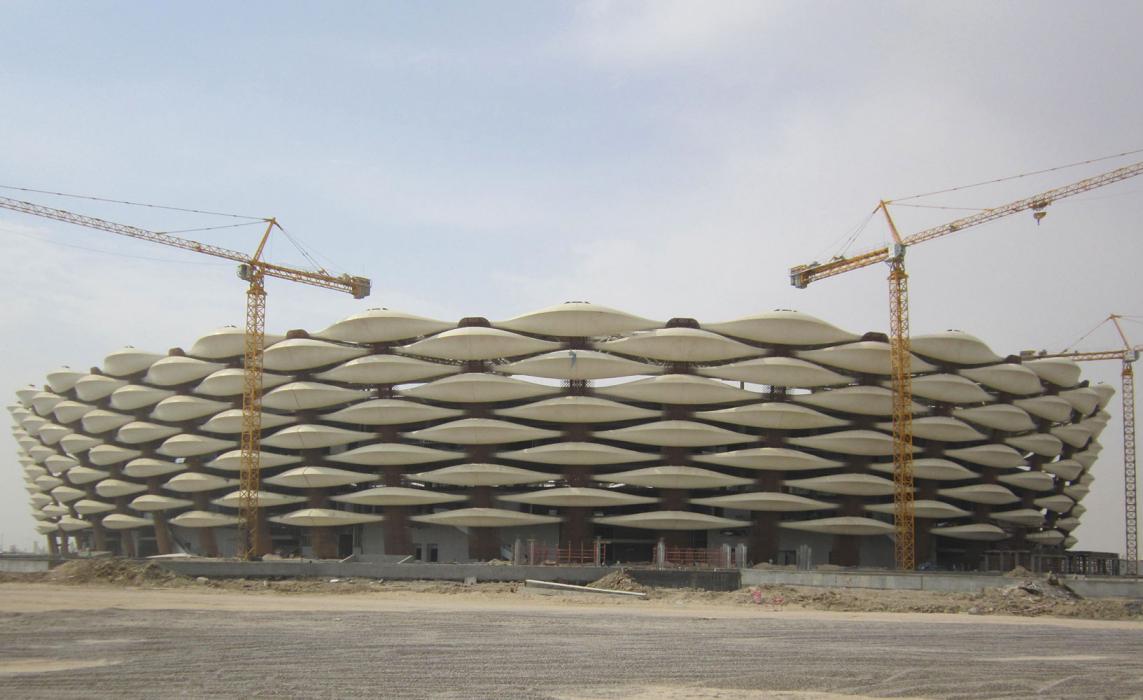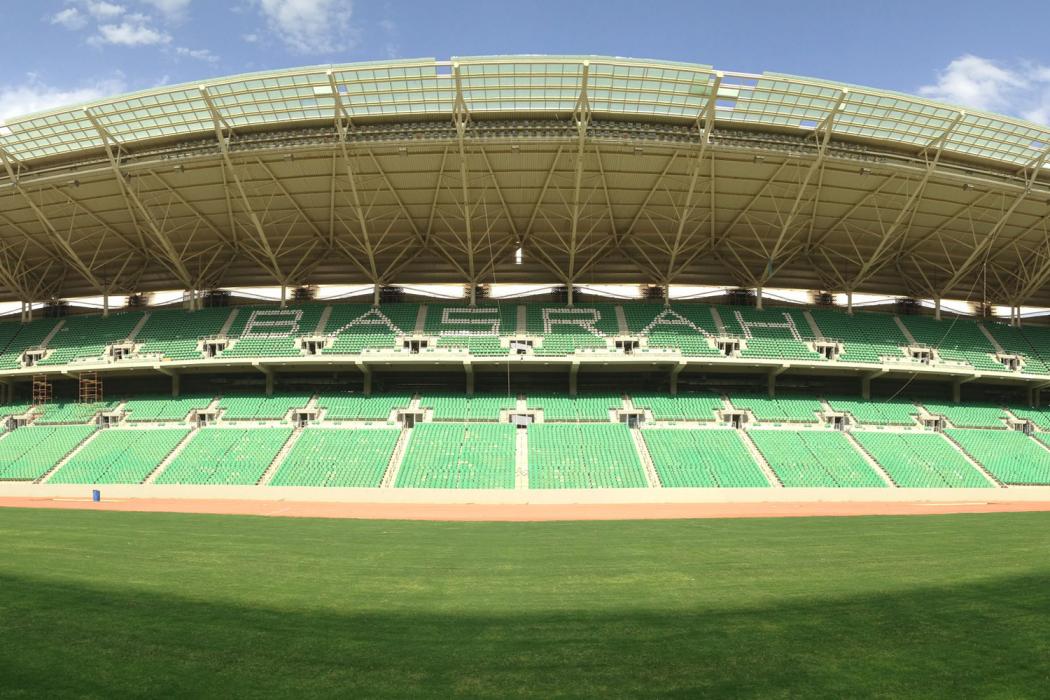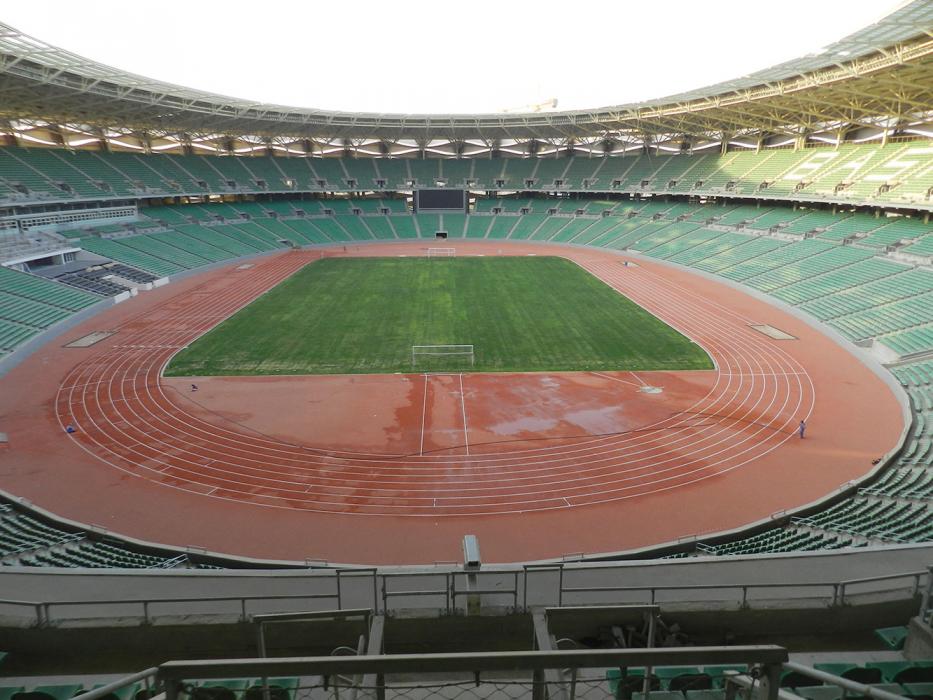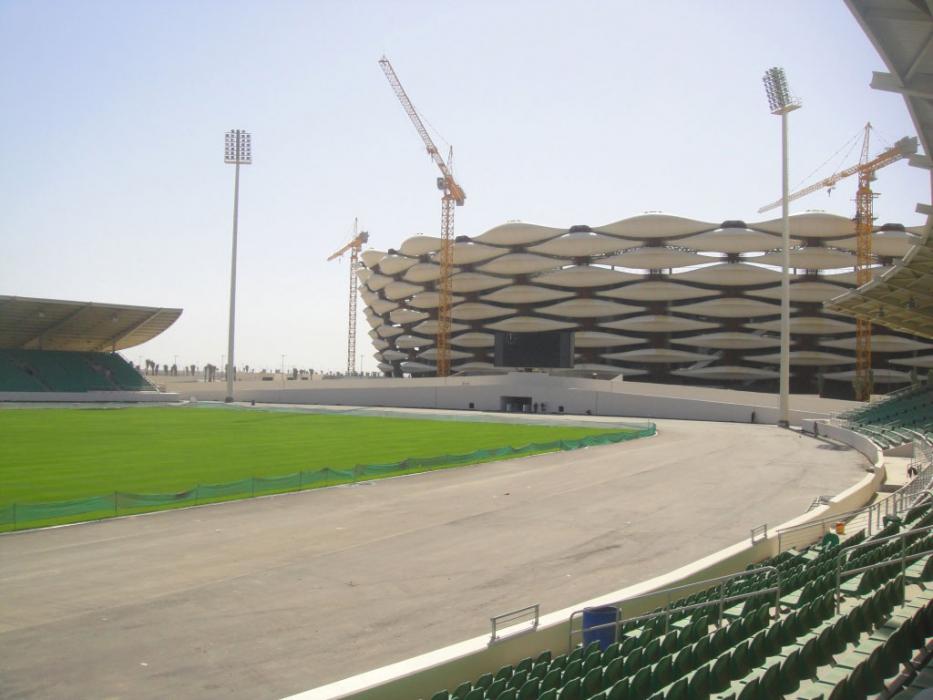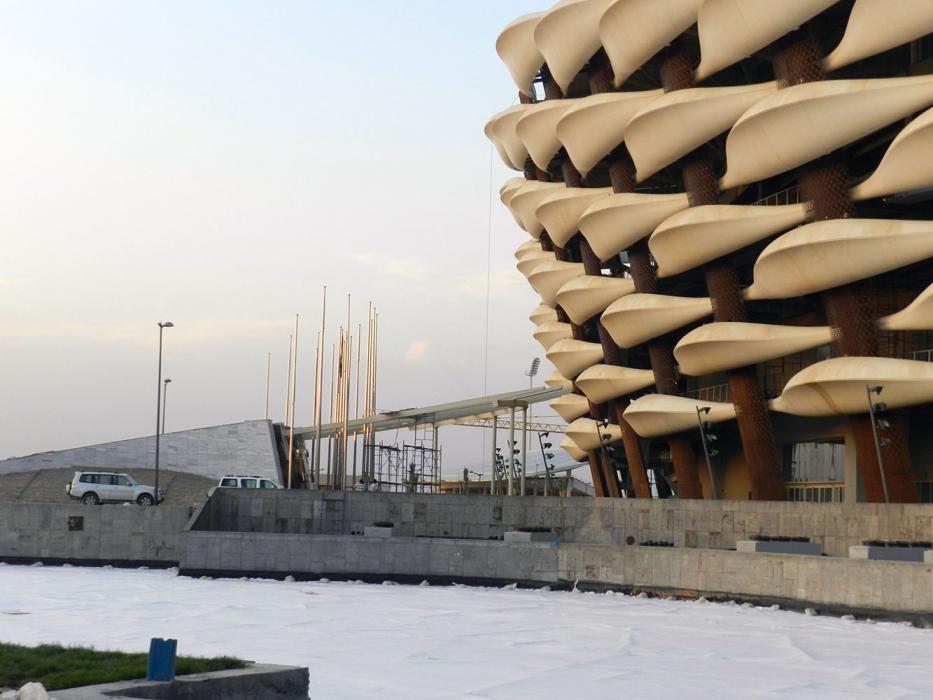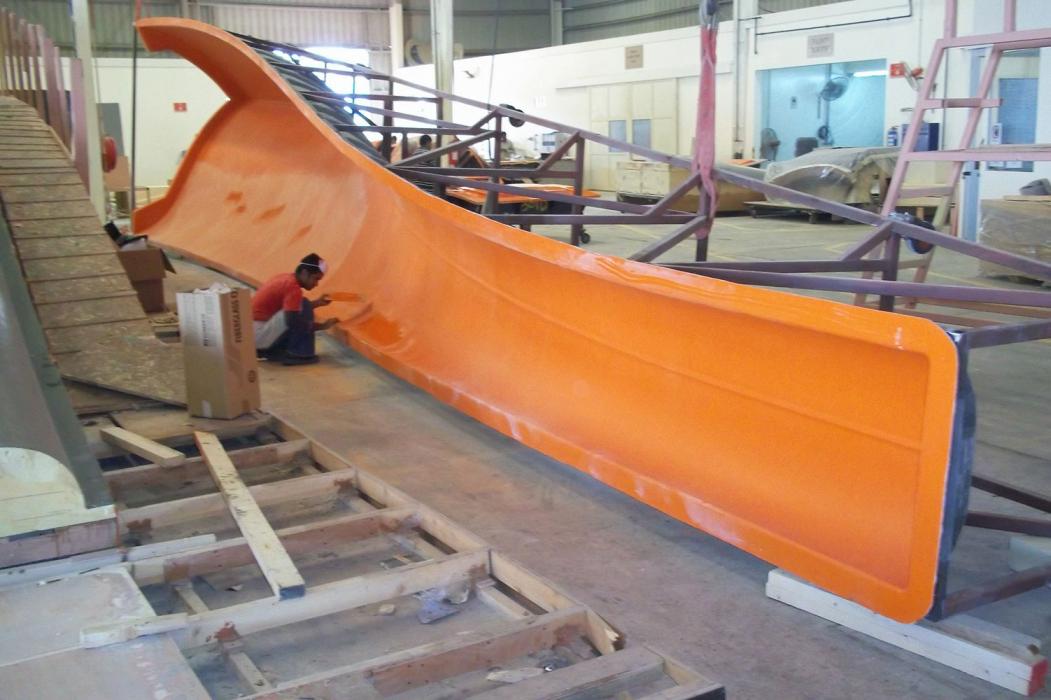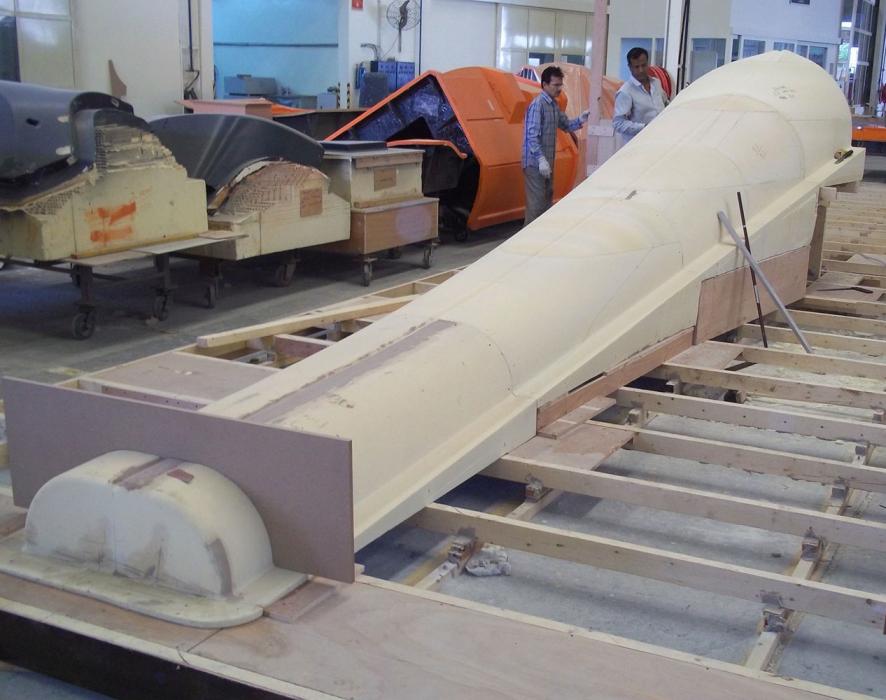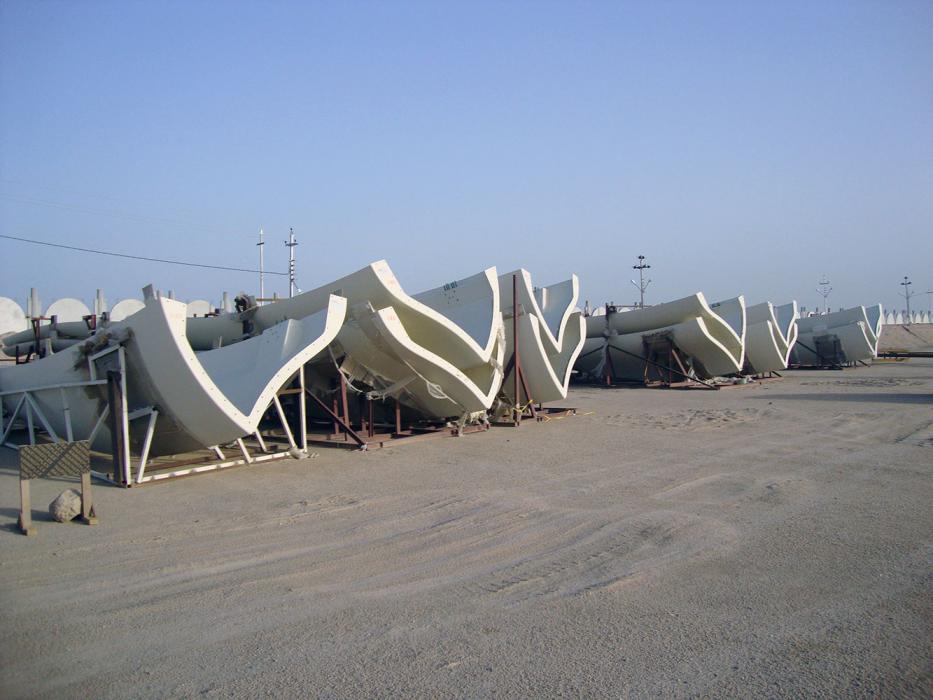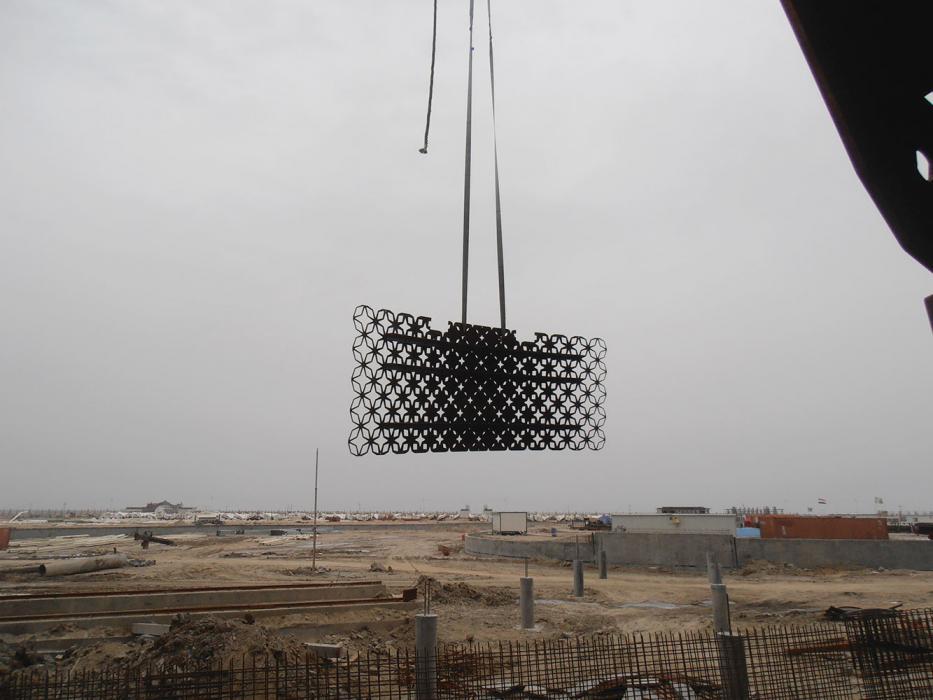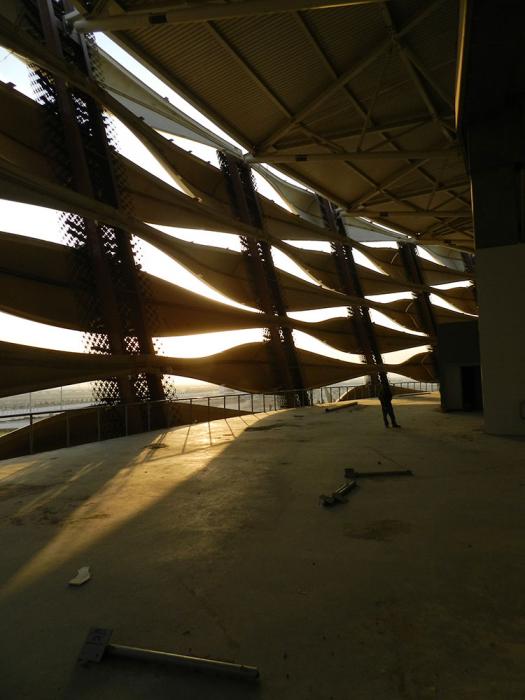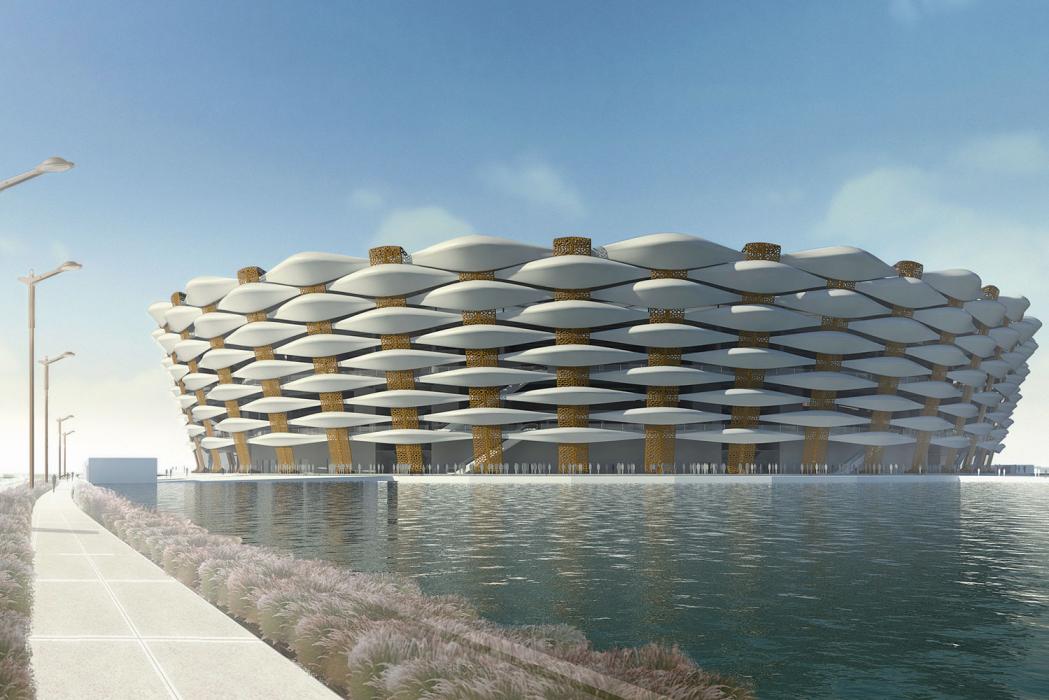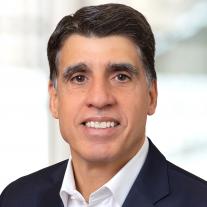Basrah Sports City
When the Iraqi government looked to create the country’s largest sports complex, it had to honor Iraq’s history and serve as an architectural beacon to the region.
An Architectural Gem Honoring Iraqi History
When the Iraqi government looked to create the country’s largest sports complex, it had to honor Iraq’s history and serve as an architectural beacon to the region. The Basra Sports City complex accomplished all of that and more. The mammoth 2.77 million-sq-ft facility consists of two soccer stadiums, four training fields, athlete housing and a fire station. A manmade lake shaped like Iraq surrounds the complex’s main stadium, which features a unique, undulating façade that drew inspiration from the area’s date palm trees.
We provided structural design, façade and construction engineering services to HOK for this design-build, fast-track complex.
Highlights
- The main, multilevel stadium includes 65,000 seats, 15 large suites, spectator and player amenities, support facilities, 205 VIP underground parking stalls and a tunnel connecting the main stadium to the secondary stadium.
- The single-level secondary stadium consists of 10,000 seats, spectator and player amenities and support facilities.
- Since the upper soils of the site are soft clays and highly compressible, the main stadium is supported on deep foundations that utilize 31.5-inch-diameter bored concrete piles installed via slurry-displacement techniques and driven to a depth of 78 feet.
- To provide full overhead coverage of the seating sections, 3D tri-chord steel trusses covered in metal decking cantilever 151 feet with a back-span of 59 feet.
- The main stadium’s original facade called for 100-foot-long GFRP panels in 10 different configurations; however, the project’s tight schedule necessitated a more efficient design.
- We developed a parametric Catia model to analyze different panel shapes and worked closely with the architect and fabricator to decrease the number of molds to five, cutting the fabrication time in half.
- We also designed highly adjustable brackets that connect the panels to the ladder columns and accommodate the varying panel sizes and positions.
- The ladder columns and the brackets were transferred from Catia into Tekla and provided to the fabricator for shop drawing production.


